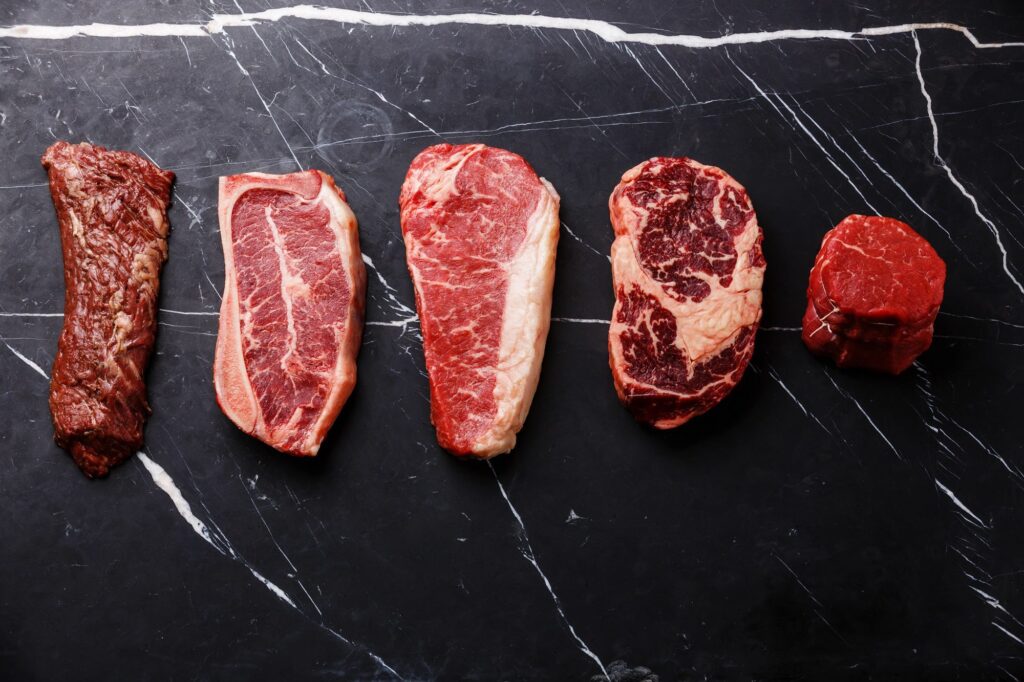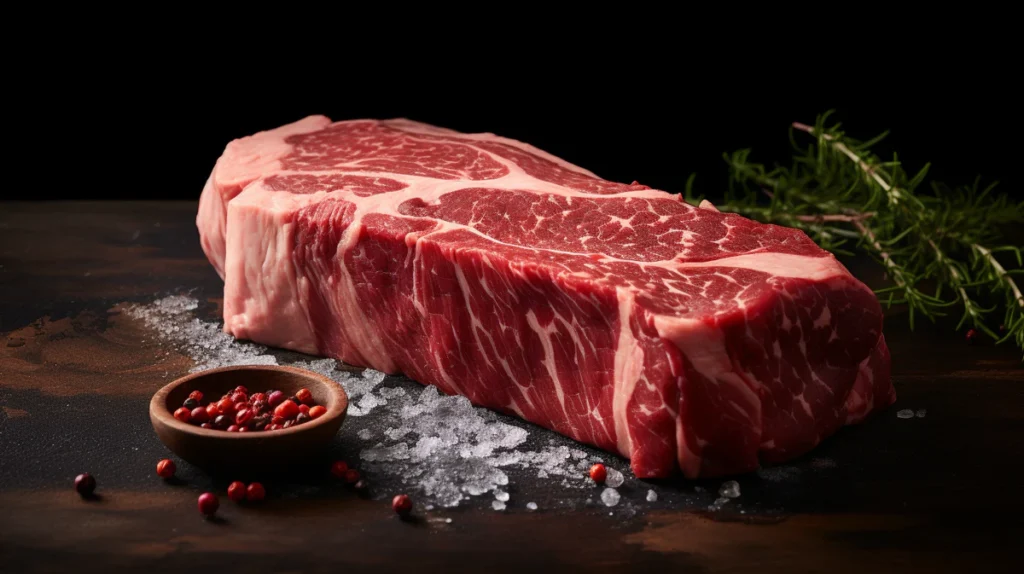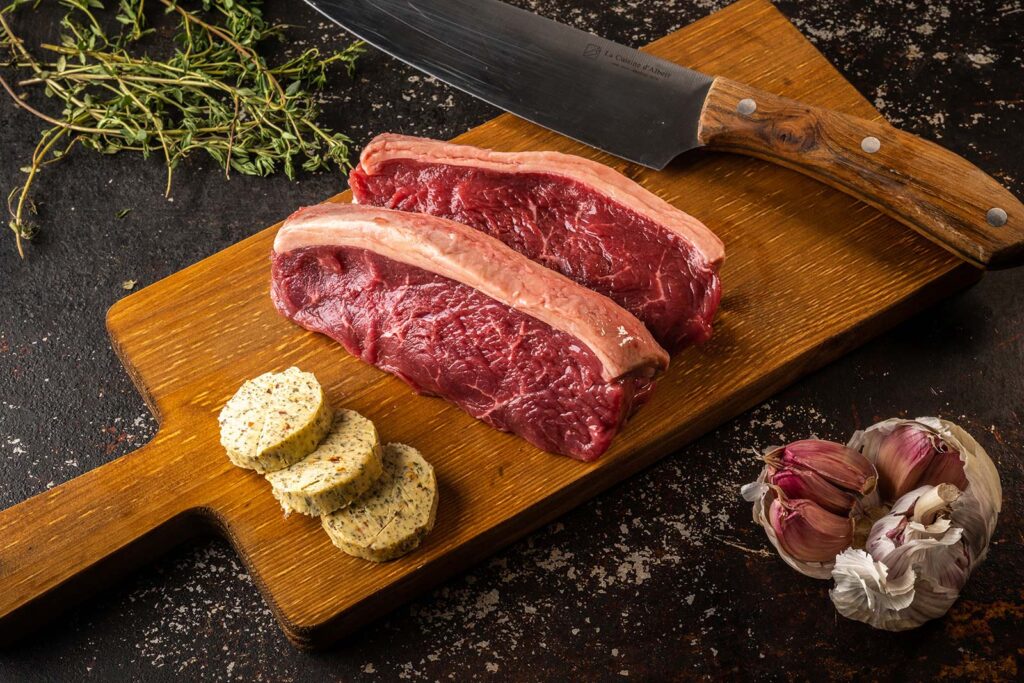For steak enthusiasts, few things are as tempting as savouring a perfectly cooked steak at a premium steakhouse. When perusing the menu, you may come across two terms: “Prime” and “Aged” steak. These classifications represent the zenith of beef quality and flavour, each with unique characteristics. Yet, for two quality steaks, what makes them different? What unique taste do they bring to the table that the other doesn’t have? Get the answers you need by understanding what they are through knowing the production processes, pros and cons, and helping you discern which aligns with your palate and preferences.
The Epitome of Quality: What is a Prime Steak?

Source: tastecooking.com
When you see “Prime” on a steakhouse menu, you can expect the pinnacle of beef quality. Prime steaks are sourced from cattle that boast the highest degree of marbling, a term that refers to the intramuscular fat within the meat. Marbling is the secret behind prime steak’s legendary tenderness, juiciness, and rich flavour.
The Art of Patience: What is an Aged Steak?
On the other hand, aged steak is a testament to the art of patience and controlled decomposition. This process enhances the steak’s tenderness and flavour. There are two primary methods of aging steak: dry aging and wet aging.
- Dry Aging: This traditional method involves placing large cuts of beef in a controlled, refrigerated environment for an extended period, typically 30 days or more. The steak loses moisture during this time, intensifying its flavour and tenderizing the meat.
- Wet Aging: Steaks are vacuum-sealed in plastic and refrigerated in wet aging. While they don’t experience the same moisture loss as dry-aged steaks, the enzymes in the meat continue to work, resulting in a milder, less intense flavour.
The Production Processes of Prime Steak

Source: godfreys.co
Pros:
- Exceptional Marbling: Prime steak is celebrated for its abundant marbling, which guarantees a buttery texture and intense beefy flavour.
- Tenderness: The high marbling content ensures that prime steak is incredibly tender, making it a delightful choice for connoisseurs.
Cons:
- Limited Availability: Prime-grade beef is relatively rare, and not all steakhouse establishments offer it on their menus.
- Cost: Prime steak is often priced higher than other grades due to its superior quality.
The Production Processes of Aged Steak
Pros:
- Enhanced Flavor: The aging process intensifies the steak’s flavour, resulting in a rich, complex profile with nutty, earthy, and slightly funky notes.
- Unique Texture: Aged steaks have a distinctive texture that combines tenderness with a satisfying chew, offering a delightful mouthfeel.
Cons:
- Specialized Preparation: Dry-aged steaks, in particular, require specific handling and careful preparation to balance their intense flavour.
- Longer Aging Times: The aging process takes time, which can be a drawback for restaurants looking for quicker inventory turnover.
Flavor Profile Comparison

Source: viandeenligne.com
- Prime Steak: Prime steaks are celebrated for their juiciness and robust, beefy flavour. The high marbling content ensures that each bite is rich and juicy, with a buttery texture that practically melts in your mouth. It’s the ideal choice for those who relish the essence of premium beef.
- Aged Steak: The aging process adds depth and complexity to the steak’s flavour. Dry-aged steaks, in particular, exhibit nutty, earthy, and slightly funky notes, making them a favourite among connoisseurs. While less intense, wet-aged steaks offer a more mature flavour than their non-aged counterparts.
Texture & Tenderness
- Prime Steak: Prime steak is exceptionally tender due to its high marbling content. The meat’s fat contributes to its flavour and ensures a luxurious melt-in-your-mouth experience.
- Aged Steak: Aged steaks, especially dry-aged ones, have a unique texture. The aging process breaks down muscle fibres and connective tissue, resulting in a tender steak with a satisfying chew. The steak’s natural juices are also concentrated, providing a delightful mouthfeel.
Preparation & Presentation
- Prime Steak: Prime steaks are often prepared using traditional methods like grilling or broiling to showcase their natural tenderness and marbling. They are typically presented with minimal seasoning, allowing the beef’s flavour to shine.
- Aged Steak: Aged steaks, particularly dry-aged ones, may require more careful preparation to balance their intense flavour. Chefs often use seasonings that complement the earthy, nutty notes of the steak. They are presented as a delicacy, focusing on the unique aging process.
Discerning Your Preference: Which One You’d Like Best

Prime Steak
Choose prime steak if you:
- Crave the juiciest and most flavorful cuts.
- Seek the classic richness of beef with exceptional tenderness.
- Value quality over quantity and are willing to pay a premium for the best.
Aged Steak
Opt for aged steak if you:
- Enjoy embarking on a flavour journey that transcends the typical beef experience.
- Appreciate the complexity of flavours, including nutty, earthy, and slightly funky notes.
- If you want a steak that is both tender and has a satisfying chew.
In steakhouse cuisine, prime and aged steak represents the pinnacle of beef quality and culinary craftsmanship. Prime steak boasts unmatched tenderness and marbling, while aged steak offers a unique flavour profile crafted through the patient art of aging. Whether you prefer the classic richness of prime steak or the nuanced complexity of aged steak, both options promise a dining experience that celebrates the finest aspects of beef. The next time you find yourself at a premium steakhouse, you’ll have a deeper appreciation for the choices before you, each offering a delectable journey into the steak world.






